Time travel: Amalfi
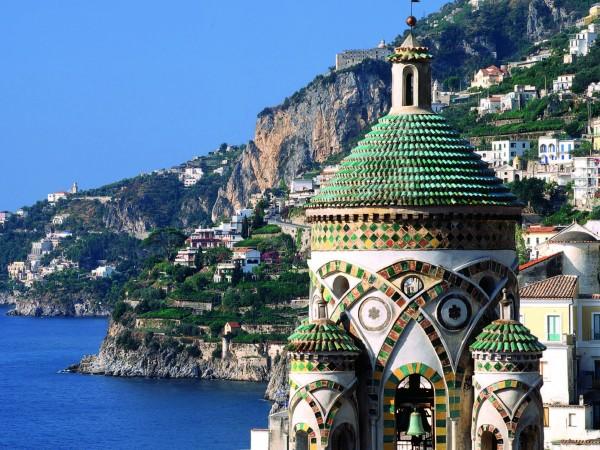
Before starting the exploration through the alleys and the architecture of Amalfi, I want to delight you with some historical notes. Amalfi was, between the ninth and twelfth centuries, the most important and powerful maritime power in the Mediterranean, boasting the title of Republic and Grand Duchy, far outclassing the other more noble rivals, Venice, Genova and Pisa. It had its own currency, called Tarì which was exchanged in the main banks of Florentine and Sienese coins. Also famous for having enacted a maritime code of 66 laws, called Tavole Amalfitane, some of which are still used in today's navigation.
Let's start from Piazza Flavio Gioia, terminus of most of the buses coming from Salerno and other locations on the Amalfi and Sorrento Coast and of the tourist pier called 'Pennello‘ 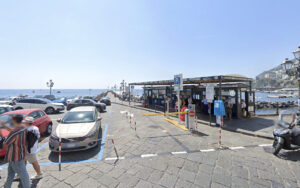 to which, from spring to late summer, it is possible to stopover from the main ports of Salerno or Sorrento as well as from the tourist docks of the other towns of the peninsula. The square has always been the nevralgic center of city activity, considering that over the centuries it was more a quay for the mooring of boats and the seaport of the exchange of goods before it was raised from the neighboring beach, in fact, we immediately notice two entrances to the central Piazza Duomo: the main access on Via Duca Mansone I and on the left side, surmounted by a portico, the
to which, from spring to late summer, it is possible to stopover from the main ports of Salerno or Sorrento as well as from the tourist docks of the other towns of the peninsula. The square has always been the nevralgic center of city activity, considering that over the centuries it was more a quay for the mooring of boats and the seaport of the exchange of goods before it was raised from the neighboring beach, in fact, we immediately notice two entrances to the central Piazza Duomo: the main access on Via Duca Mansone I and on the left side, surmounted by a portico, the 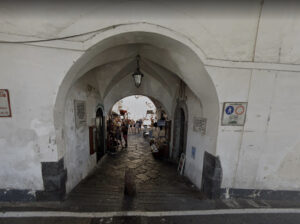 ‘Porta della Marina’, a strategic side alley once used for the unloading of goods to be transported to the city center and for the drafting of boats. In the center of Piazza Flavio Gioia there is a fountain with the homonymous statue
‘Porta della Marina’, a strategic side alley once used for the unloading of goods to be transported to the city center and for the drafting of boats. In the center of Piazza Flavio Gioia there is a fountain with the homonymous statue 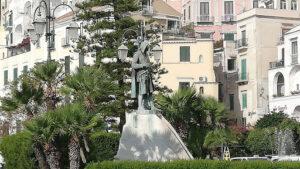 of the Amalfi navigator to whom it is dedicated who, according to the chronicles of the times, perfected the magnetic compass. On the side of the Porta della Marina the
of the Amalfi navigator to whom it is dedicated who, according to the chronicles of the times, perfected the magnetic compass. On the side of the Porta della Marina the 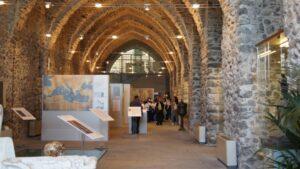 Arsenali della Repubblica building, originally used as the city's shipyard, today the main city museum, absolutely not to be missed.
Arsenali della Repubblica building, originally used as the city's shipyard, today the main city museum, absolutely not to be missed.
Piazza Duomo and the Cathedral
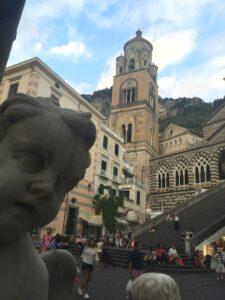
Let's leave the statue of Flavio Gioia behind us and take the main entrance up Via Duca Mansone I. In a few steps, crossing souvenir shops, ceramics and pastry shops, we find ourselves in Piazza Duomo, the heart of Amalfi which during the summer is teeming with tourists and visitors. Impossible not to see the undisputed dominator of this square: the beautiful Cathedral of Saint Andrew which houses the remains of the homonymous saint, apostle of Jesus, to whom the cathedral is dedicated, patron and protector of the city. You immediately notice, in the clearing as soon as you arrive in the square, the homonymous Saint Andrew’s Fountain, also known as People’s Fountain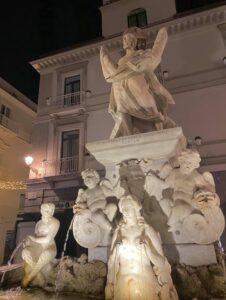 , dedicated to the saint, with his figure in the center surrounded by angels and marine divinities to whom it is possible to quench their thirst with the fountains created on the sides. Built in Baroque style in 1760, initially placed in front of the cathedral and only later, at the beginning of the twentieth century, moved to the side of the square.
, dedicated to the saint, with his figure in the center surrounded by angels and marine divinities to whom it is possible to quench their thirst with the fountains created on the sides. Built in Baroque style in 1760, initially placed in front of the cathedral and only later, at the beginning of the twentieth century, moved to the side of the square.
Cloister of Paradise and Basilica of the Crucifix
The staircase made up of 62 steps that rises from the square up to a porticoed atrium supported by marble columns from which, turning around, you can enjoy a unique perspective on the town of Amalfi: the houses, the bars, the restaurants. In the center of the portico we find the entrance to the cathedral with its bronze doors cast in Constantinople in 1060 and the marble portal, dating back to the eighth century, with anthropomorphic figures and "eight" geometric-floral motifs of Lombard art. To fully savor the atmosphere that reigns in this church, I also suggest a visit to the Cloister of Paradise and also the Basilica of the Crucifix, the oldest cathedral in the town.
Piazza dei Dogi
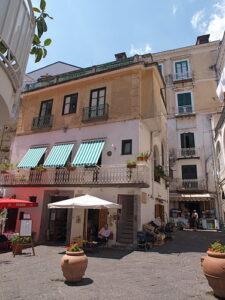
Opposite the Cathedral we find another important square of the historic republic, through a very characteristic alley on the left side of Piazza Duomo you reach the small square 'dei Dogi', historic square in which there were 5 churches now incorporated into the homes of citizens and the main workshops of the Amalfi blacksmiths who accessed the Arsenals for repairs to boats.
Rione Vagliendola
We leave Piazza dei Dogi and from a side alley, we head to one of the oldest districts of the city, guardian of the noble houses of the 12th century Republic and from which it is possible to enjoy one of the most illustrated views of Amalfi. The Rione Vagliendola  absolutely must not miss in a list of what to see in Amalfi in one day. Following an alley made up of narrow arches and many steps, we cross the heart of the city, so much so that in some points we pass with difficulty in two, we reach this cluster of houses that lead to a path, now paved, which leads to the church of San Biagiofurthermore, by continuing, it is possible to reach the former Capuchin’s Convent now a renowned 5 star luxury hotel.
absolutely must not miss in a list of what to see in Amalfi in one day. Following an alley made up of narrow arches and many steps, we cross the heart of the city, so much so that in some points we pass with difficulty in two, we reach this cluster of houses that lead to a path, now paved, which leads to the church of San Biagiofurthermore, by continuing, it is possible to reach the former Capuchin’s Convent now a renowned 5 star luxury hotel.
Mill’s Valley and Ironworks Valley
Let's go back from the Vagliendola district and leaving the main square behind us we set out for the characteristic main street of Amalfi. In 5 minutes of light walking we arrive at Mill’s Valley ward, 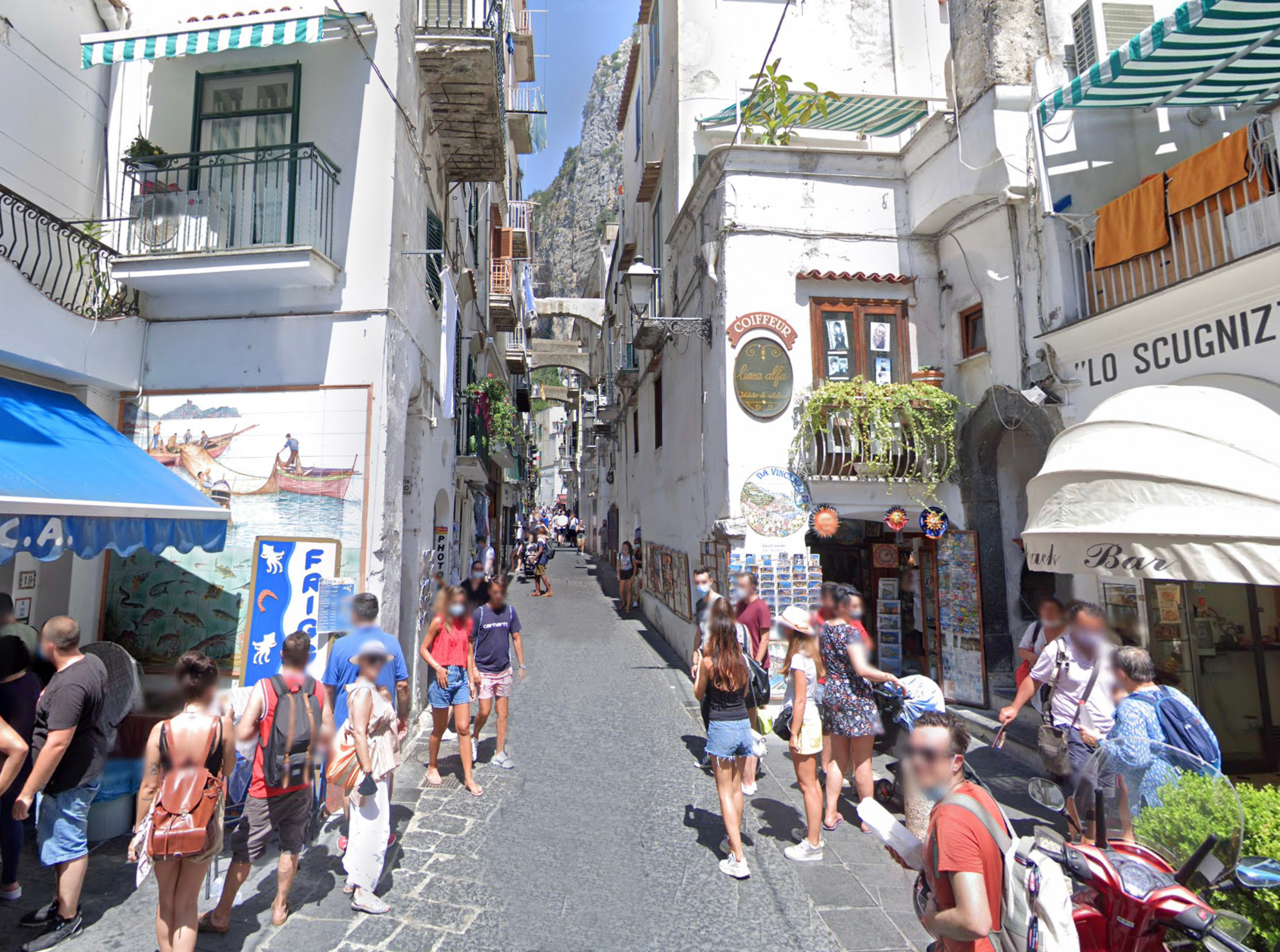 passing under an arch surmounted by houses all around we find the interesting Amalfi Paper Museum which preserves machinery and equipment used in the ancient paper mill to make paper by hand. The visit lasts about twenty minutes, just enough to be fascinated by the art of Amalfi paper making. We leave the museum and continue until we reach the city limits where the Valle delle Ferriere (Ironwork Valley) opens in a unique setting of greenery and paths that proceed in a gorge that climbs up to the mountain. The valley is a wonderful experience for trekking lovers, the path is part of the natural reserve of the Monti Lattari and crosses woods, streams, ancient ruined mills of medieval origin in which was produced the famous paper of Amalfi and the ancient ironworks that supplied Amalfi with iron from which the valley takes its name. The microclimate of the narrow gorge has also allowed the conservation of a rare fern, the Woodwardia radicans, example of a plant from the pre-glacial period.
passing under an arch surmounted by houses all around we find the interesting Amalfi Paper Museum which preserves machinery and equipment used in the ancient paper mill to make paper by hand. The visit lasts about twenty minutes, just enough to be fascinated by the art of Amalfi paper making. We leave the museum and continue until we reach the city limits where the Valle delle Ferriere (Ironwork Valley) opens in a unique setting of greenery and paths that proceed in a gorge that climbs up to the mountain. The valley is a wonderful experience for trekking lovers, the path is part of the natural reserve of the Monti Lattari and crosses woods, streams, ancient ruined mills of medieval origin in which was produced the famous paper of Amalfi and the ancient ironworks that supplied Amalfi with iron from which the valley takes its name. The microclimate of the narrow gorge has also allowed the conservation of a rare fern, the Woodwardia radicans, example of a plant from the pre-glacial period.
Promenade of the Knights
After the walk through the alleys and squares of Amalfi, we can return to the square from which we started,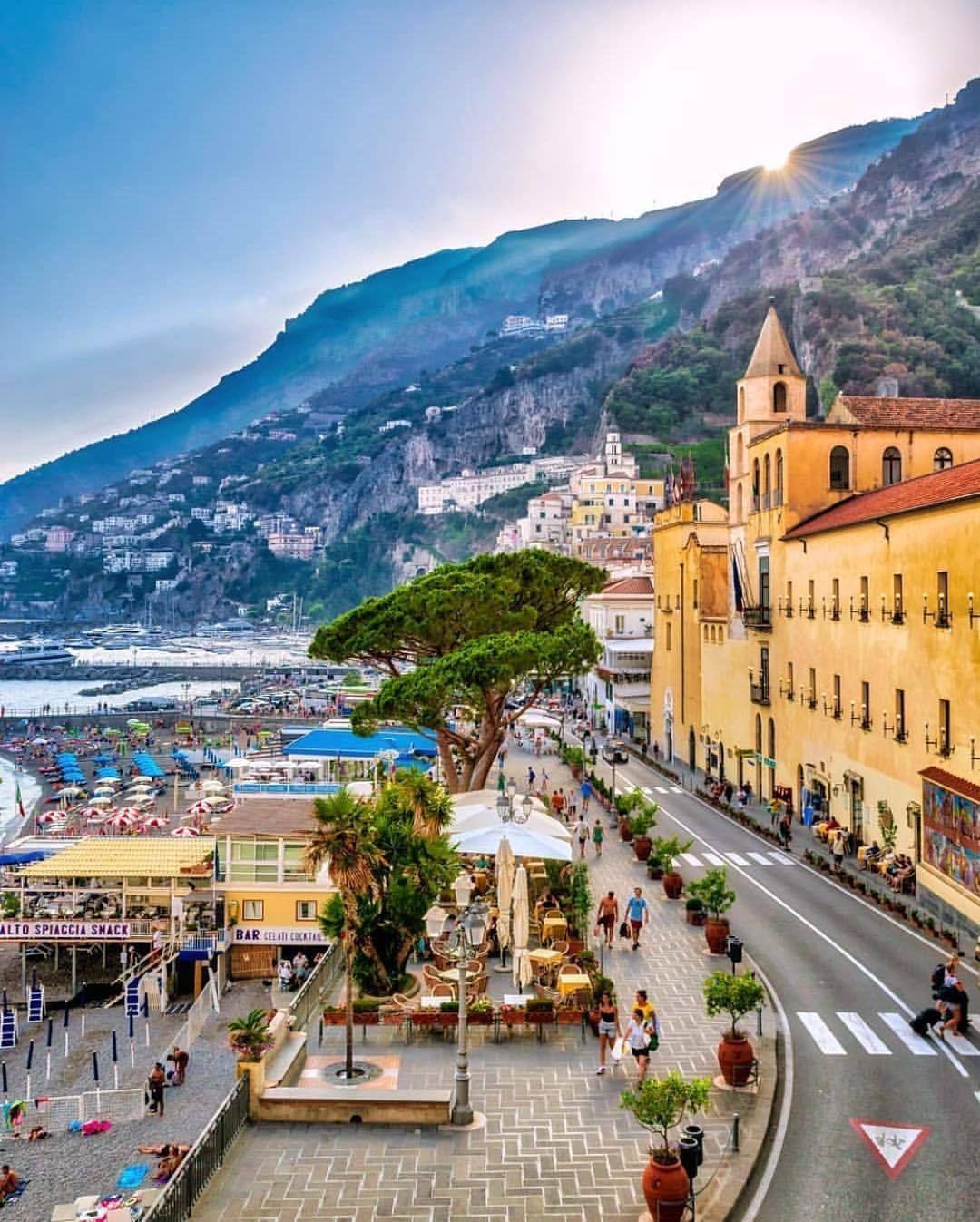 Piazza Flavio Gioia and continue the day in contact with the sea, the truest soul of this city with whom, from the Maritime Republic as he was, he has always had a very close bond. To do this you could reach the nearby Promenade of the Knights or take a stroll on the pier near the square from which you can admire Amalfi in all its beauty!
Piazza Flavio Gioia and continue the day in contact with the sea, the truest soul of this city with whom, from the Maritime Republic as he was, he has always had a very close bond. To do this you could reach the nearby Promenade of the Knights or take a stroll on the pier near the square from which you can admire Amalfi in all its beauty!

